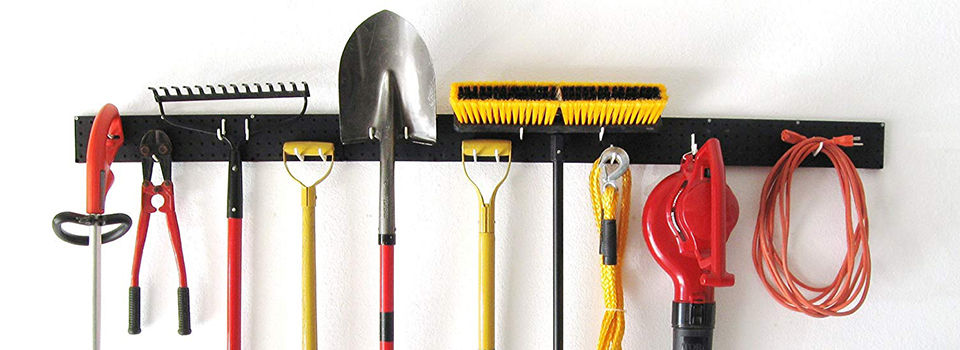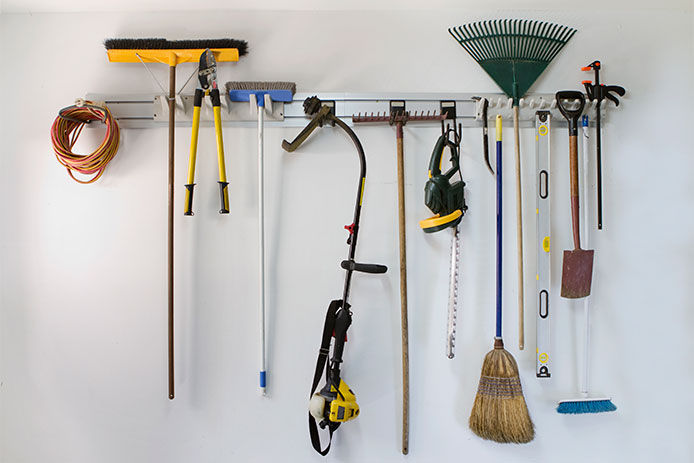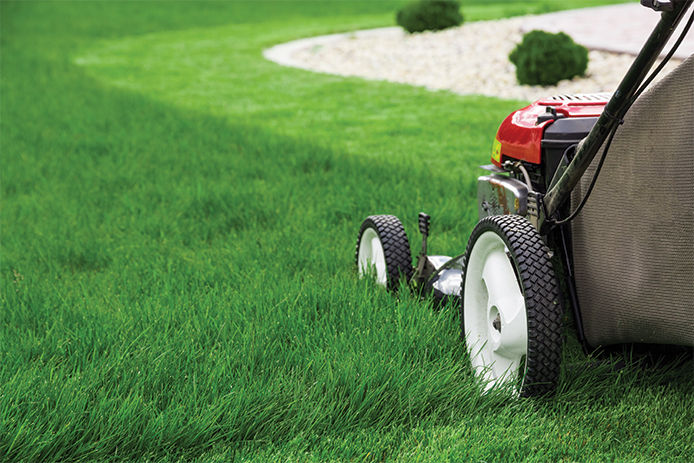Tips for Storing Lawn and Garden Tools

You may notice when you clean out the garage: that you have a lot of lawn and garden tools that have accumulated over the years. You don’t want to throw them out or give any away — who knows when they’ll come in handy! Finding a place to store those tools will cut down on the clutter and leave more room for bicycles, golf clubs, fishing gear, and oh yeah, your car.
Space and Permits

Depending on the number and size of your tools, you might consider a shed. Aside from the lawnmower, rakes, shovels, weed whackers, edger, and the rest of the garden tools, you might be able to squeeze in a bike or two. However, take a good look at the available space in your yard. The average lot size in Austin, Texas, for example, is 7,350 square feet, while their garages average just 676. Barely enough room to park two cars, let alone store lawn and garden tools. A shed could come in handy, as long as it fits with your landscaping. (It might cut down on the amount of grass you have to mow!)
Keep in mind, some neighborhood homeowner associations (HOAs) have guidelines about what you can build and how large it can be. For example, in Austin, Texas, the rules for residential building permits are very specific.
Contact your local government or HOA to determine what you can and cannot do on your property, and the permits required.
Building a Shed

You can do it the easy way and buy a premade shed, or let your creative inhibitions run wild and do it yourself. In very simplistic terms, the DIY method includes:
- Leveling the ground and installing deck piers along a grid.
- Laying support beams.
- Attaching the joists.
- Nail plywood sheets to the joists to make the floor.
- Build the wall frames and cut out the door.
- Set the roof rafters.
- Nail plywood to the roof rafters.
- Covering the walls.
- Tar-papering or shingling the roof.
If you’re handy with woodworking tools and want to cut down on labor costs, this DIY project may be worth your time.
Storage for the Small Stuff

Whether you store your lawn tools in the garage or a shed, they can pile up quickly. Implements such as trowels, weed pullers, pruners, shears, gardening gloves, and spikes will easily fit in specialized containers used for patio furniture cushions and mats. Lawn and garden chemicals, hand sprayers, and weed killers should be stored safely in a lockable container.
Fishing tackle boxes make great storage units for gardening attachments such as nozzles connectors and plugs.
Long-handled Tools

Stop tripping over rakes, brooms, and spades. These long-handled lawn and garden tools will fit into a mount on the garage or storage shed walls. Whether you prefer nails, dowels, or metal hooks, attach a rack someplace where you can reach what you use most. If your shrubbery requires constant clipping, the lopper should be closest to your access point. Provide enough space for each tool so that it’s not falling onto the others. Measure the walls and tools with a measuring tape to determine how much space you need, relative to the size of each piece.
Shelves are handy but if you don’t want to build or attach them to a wall, get a separate metal shelf unit that can fit in the garage or storage shed. Remember, to measure your available storage space before you buy!
Tools with Engines

Lawnmowers, leaf blowers, and other tools with gasoline-powered engines should be stored with care as not to damage the engine. For starters, be sure that there is no gasoline left in the tank; otherwise, it will turn into varnish and harm your engine. Either drain the engine or run the engine until it dies. For four-cycle motors, be sure to remove the oil as well, and don’t forget to put oil back in before you use it next. Make sure that the gas cap is on, the carburetor is covered, and the tool is stored in a cool, dry place.